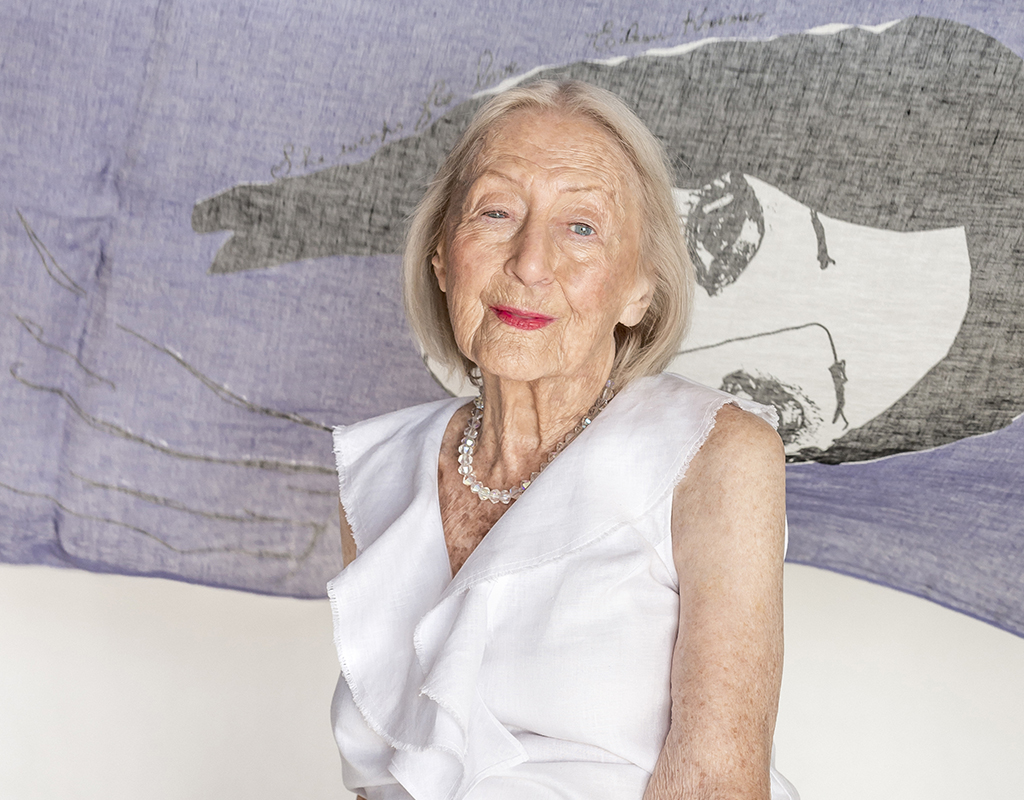Eileen Kramer was an Australian dancer, artist, performer, choreographer, and supercentenarian.
BIOGRAPHY
Eileen Kramer was born in Mosman Bay, New South Wales, Australia, on 8 November 1914. Her mother, Hilda Henrietta, came to Australia from England with her family. Her father, Julius Kramer, was born in South Africa, though his family originally came from Germany. She recalled that a love of learning was always part of her character. In 1933, at age 19, she began taking singing and piano lessons from a local teacher. She noted that, while she could sing quite well, performing in public made her nervous. Nonetheless, she decided she wanted to pursue serious studies at the Conservatorium of Music on Macquarie Street in Sydney. With her mother’s support, she enrolled as a classical voice student there in the spring of 1935. In the autumn of 1936, 22-year-old Kramer began searching for a new place to live. Her mother, who had left Kramer’s loving but alcoholic father when Eileen was 13, was preparing to marry a man with seven children and move out of town. She lived in a shared cottage on Philip Street until 1940.
In 1936, psychoanalyst Richard Want became her first partner. By 1940, however, she had ended the relationship. That same year, her mother invited her to a charity concert at the Conservatorium—an evening that would change her life. The program featured the Bodenwieser Viennese Ballet, Australia’s first professional modern dance company. Kramer was captivated from the moment the dancers moved to the opening bars of Strauss’s Blue Danube. Reflecting on that experience, she recalled, “I was sitting in the audience thinking, ‘Yes, that’s what I want to do.’” The very next day, she sought out Gertrud Bodenwieser, expressing her desire to join the company. Three years later, she was cast in The Blue Danube.
For the next decade, Kramer toured with the Bodenwieser company, performing across rural Australia, South Africa, and India, where she even found time for a brief romance with a French diplomat. After the India tour, however, she and the company went their separate ways. It was 1953, and Gertrud Bodenwieser’s choreography was evolving toward storytelling through complex group dances, requiring a level of physical demand that Kramer felt she could no longer meet. She requested a year’s leave and set off by boat for Europe but decided to disembark in India instead. There, she supported herself by performing solo dances—gypsy dances and light, original pieces of her own—at hotels. Now in her late 30s, she also performed in Pakistan, traveled to the Khyber Pass, and painted murals on the walls of a hotel restaurant in Karachi.
In the 1950s, Kramer was living in Paris, working as an artist’s model. One day in 1956, she met Baruch Shadmi, a Polish-Israeli filmmaker six years her junior, who would become her partner for the next three decades. She was 42; he was 36. Kramer and Shadmi moved to New York, where, in the early 1960s, they began collaborating on an animated dance film, with Kramer both dancing and creating hundreds of models for the project. Partway through, Shadmi suffered a stroke. As his health continued to decline, Kramer set aside her own career to care for him. She looked after him for nearly 20 years, until his passing in 1987.
In 1988, Kramer moved to Lewisburg, West Virginia, to be near her friend Maryat, where she resumed her work in theater and the arts. Maryat introduced her to “Bill” Tuckwiller; though Kramer was initially hesitant, they quickly became close and eventually lived together. Kramer stayed active at The Dance Studio, choreographing a performance at Carnegie Hall in 1992, which featured her new work, Whispers, Cries, and Angels. In 1997, Kramer created another major work, The Buddha’s Wife, followed by Osiris and the Black Hole, which premiered at Carnegie Hall in 2003. On New Year’s Eve 1997, while Kramer was out searching for their lost cat, Tuckwiller passed away suddenly in front of the television. Kramer didn’t return to Australia for good until 2013, when she was 99.
In 2014, to celebrate her 100th birthday, Kramer crowdfunded, choreographed, and performed a dance piece titled The Early Ones. The following year, she was nominated for the Australian Financial Review and Westpac’s 100 Women of Influence Awards. In 2017, inspired by her travels in India, she created the dance-drama A Buddha’s Wife, part of a larger project celebrating her life, with support from the Arts Health Institute. That same year, a portrait titled The Inner Stillness of Eileen Kramer by plastic surgeon Andrew Lloyd Greensmith was a finalist for the Archibald Prize. Additionally, filmmaker Sue Healey’s portrait of Kramer was a finalist in the National Portrait Gallery’s Digital Portrait Prize in Canberra and the Blake Prize at Casula Powerhouse, Sydney, in 2018. Healey also won the Australian Dance Award for Outstanding Achievement in Film or New Media. Kramer’s memoir, Eileen: Stories from the Phillip Street Courtyard, co-written and published in November 2018, offered more insights into her remarkable life. In December 2018, she appeared as a guest on ABC’s One Plus One. The following year, at age 104, she became the oldest artist to submit a self-portrait to the Archibald Prize.
RECOGNITION
Her age was validated by LongeviQuest on 18 November 2024.
ATTRIBUTION
* Eileen Kramer – Wikipedia
* “Bohemian rhapsody: Why there’s no stopping this 103-year-old dancer” – Sydney Morning Herald, 3 November 2018
* “Eileen Kramer on 108 years of extraordinary life: ‘I can dance in the mirror for hours’” – The Guardian, 28 July 2023
* “life keeps me dancing by eileen kramer – an extraordinary life” – Sydney Arts Guide, 31 July 2023
[crp limit=’4′ ]


